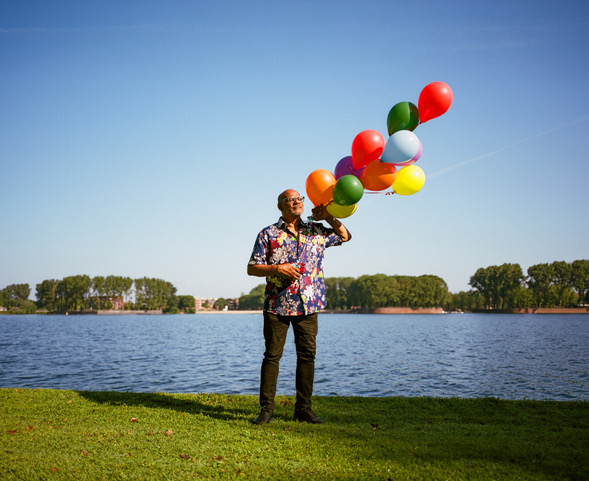This month
This month

Lorem ipsum by sit amet, consecteur adipising elite. Mauris venenatis est sitt amet tempus porttitor. Sed feugiat nulla eget odio mattis viverra. Lorem ipsum by sit amet, consecteur adipising elite. Etiam finibus feugiat eros semper aliquet. Propin neck dive arcus. Nulla erat lectus, vulputation sagittis dapibus eget, condimentum ut velit. Etiam sagittis venenatis fringilla. Ut egestas ipsum from justo luctus ultrategus. Phasellus condimentum sit amet libero non accumsan.


Live well
Elk jaar staat het Van Eesteren Museum in het teken van een jaarthema. Het thema van 2024 is: Jakoba Mulders Zielsverwanten. Binnen dit thema onderzoeken we de rol van vrouwen in de ontwerpwereld waarbij we de schijnwerpers een jaar lang op vrouwelijke architecten, stedenbouwers en designers richten. Cornelis van Eesteren was namelijk niet de enige persoon die belangrijk was in de realisatie van de uitbreidingswijken van Amsterdam. De stem van de vrouwen die hebben bijgedragen aan dit verhaal, is in het verleden grotendeels onderbelicht gebleven en daar wil het museum dit jaar verandering in brengen. Hierbij onderzoekt het museum ook de rol van gender in het ontwerpproces. In de twintigste eeuw hadden voornamelijk mannen de controle over ontwerpprocessen en vrouwelijk gebruik werd veelal werd genegeerd. Met het jaarthema Jakoba Mulders Zielsverwanten wil het Van Eesteren Museum de vrouwelijke onderbelichting corrigeren en bovenal de stap naar het heden maken door aandacht te geven aan vrouwelijke ontwerp professionals in de hedendaagse praktijk.
The museum house as a research place
Every year, the museum invites two designers, architects and/or curators to bring the museum home's collection into contemporary practice. They do this by analyzing and interpreting an object of their choice and translating it into contemporary practice.



Mobiles
Toys or art? Mobiles are moving (applied) works of art that have enchanted both young and old since the 1930s. Even today, mobiles are still popular objects in art and interior design. The essence of a mobile is the play of light, air and space. The mobile is a symbol of freedom, creativity and innovation. It represents the core of the avant-garde philosophy that the Van Eesteren Museum is rooted in. Sculptor Alexander Calder is the grand master and creator of the mobile. With moving works of art made from steel wire and cut outs that move through air, he enchanted his audience with what he called “a new form of sculpture.” From 1953, the Danish couple Flensted also focused entirely on making mobiles. They did not profile themselves as autonomous artists, like Calder, but focused specifically on the mobile as a decorative interior object. Entirely in the tradition of Scandinavian design of the 1950s, they made modernist moving objects with little frills.
Dutch product designers were also working on mobiles at the time. In the 1960s, Jan Hogervorst designed the rod lamp, a mobile-like lamp that could rotate in any direction, so that the light could shine anywhere in the room. An original copy of this Anvia lamp hangs in the museum house. In 2024, the mobile will be the first object in the program line The Museum House as a research place. A contemporary designer is invited to research mobiles and then design his own mobile work. The work will be shown to the public in the museum home for two months.




The Garden
The garden of the museum house was inspired by the work of Mien Ruys (1904-1999), one of the Netherlands' most famous landscape architects, who was internationally renowned and is considered a pioneer of modern landscape architecture. In the 1950s, Ruys tried to democratize the design of the garden. She was inspired by prefab construction in the 1950s and invented so-called “ready-to-wear gardens”. Each citizen was able to compose their own garden using different planting schemes. Ruys designed schemes with strong, healthy perennials that bloom for a long time and are easy to maintain. She made borders of various sizes, colors, for sand, clay and peat and sun, partial shade and shade, suitable for small gardens. This way, anyone with a prefab house could also build their own garden. Ruys derived the name “ready-to-wear gardens” from the fashion world where ready-to-wear clothing had made its appearance.
The garden of the museum house is one such ready-made garden, designed according to Ruys' standard planting plans. The Van Eesteren Museum will “link” this garden to a Ruys garden from 1932, located in a residential block in Amsterdam-West, in the Bos en Lommer district. This residential block is seen as a precursor to the later residential blocks in Nieuw-West and the garden as inspiration for the later ready-to-wear gardens. The block has a beautiful courtyard that is being restored to its original state by a resident collective from the residential block. It is a completely different garden than the ready-to-wear garden of the museum house. The comparison of the two gardens shows how garden design developed between 1932 and the 1950s and what the democratization of garden design meant. In addition, we are investigating what it means to restore a garden. Is it even possible to return a living organism to its original state?
These questions are at the heart of the second research project in this programme line. This project collaborates with curator Gerlinde Schuller, who is doing a long-term project to the Mien Ruys garden in the residential block in Bos en Lommer. Mien Ruys' archives are stored at Het Nieuwe Instituut. Read here more about the archive.











.png)








